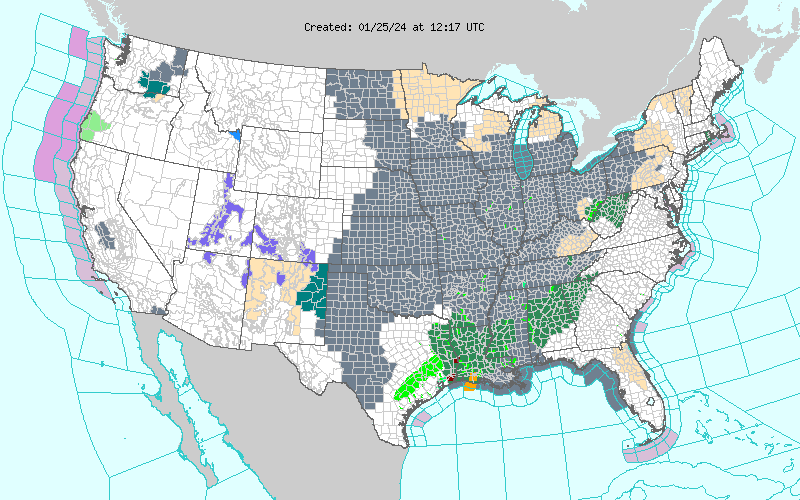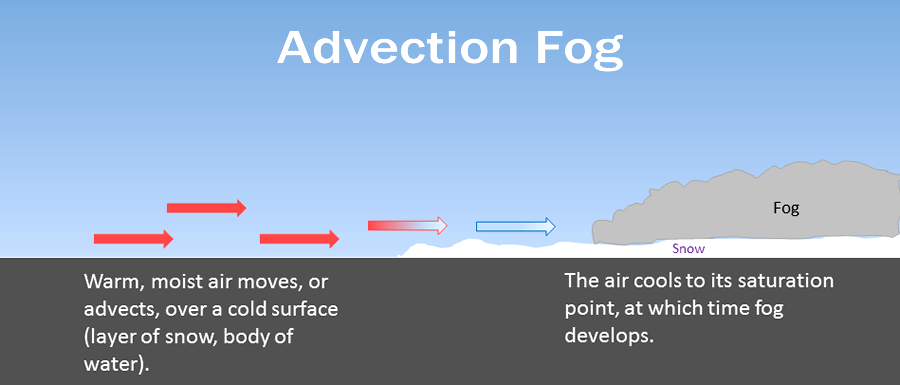By Hope Kleitsch
Fog blanketed over 20 states last week, causing the National Weather Service to issue a record breaking number of Dense Fog Advisories. 1,517 advisories were issued on Thursday, Jan. 25, making it the record number of dense fog advisories ever simultaneously issued. Jan. 24 and 23 made up the second and third most issued at 1,341 and 1,107.

Last week’s setup was perfect for a long-lived and expansive fog. The arctic blast from the week prior left the ground frozen, yet at the same time, there was a warm, moist air mass that moved into the area. The cold ground cooled the warm air mass near the surface, which caused the temperature of the air mass to cool to the dew point. When this occurs, the air molecules will condense, leading to fog. Now, this system also brought a lot of rain. The week-long rainfall saturated the soils. The saturation allowed for even more moisture to be condensed, leading to an even denser fog to form.

Winter weather conditions make up the most weather-related car accidents, at 15%. According to the U.S. Department of Transportation, over 1,300 people are killed and 116,800 people are injured in accidents from snowy, icy, or slushy surfaces in a year. Over 900 people are killed and 76,000 are injured in crashes from snowfall or sleet. These numbers are troubling and, ultimately, winter weather makes for hazardous travel across the United States.
One category in weather-related car crashes that many people will overlook, and that is accidents caused by fog. Every year, 38,700 crashes are caused by fog, and over 600 people are killed and 16,300 people are injured. Given that reduced visibilities mean slower reaction/stop times, it makes sense as to why there are so many crashes related to fog.
In October 2023, there was a massive vehicle pile-up on I-55 in Louisiana due to a phenomena called, “super fog.” It’s a mixture of dense fog and wildfire smoke from marsh fires in the area. 158 cars were involved in the fiery crash and seven people were killed.
Due to the nature of fog, terrain, wind and small variances in temperatures can have a major impact on its development. Given how tedious this phenomena can be, BAM Weather has developed a multi-faceted approach to forecasting fog. Over the past several years, BAM Weather has developed an advanced hour by hour icon logic to better display fog forecasts. The hourly forecast in BAM’s latest platform, Clarity, can display both fog and its even more hazardous counterpart, freezing fog.

In addition to the advancements in the automated data in Clarity, the interactive radar tool allows users to simply click any location and see current or forecasted visibility for any spot in the Continental United States.

Of course, the most valuable portion of BAM Weather’s fog forecasting comes with the ability to simply message a meteorologist 24/7 for questions. Ultimately, a meteorologist will be able to pinpoint the intricacies in fog forecasting better than any other tool or source and BAM has a full team to assist clients at any time!
